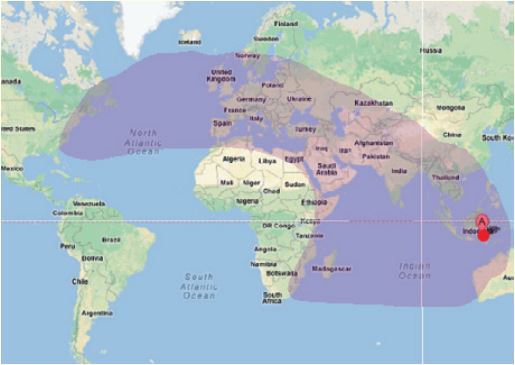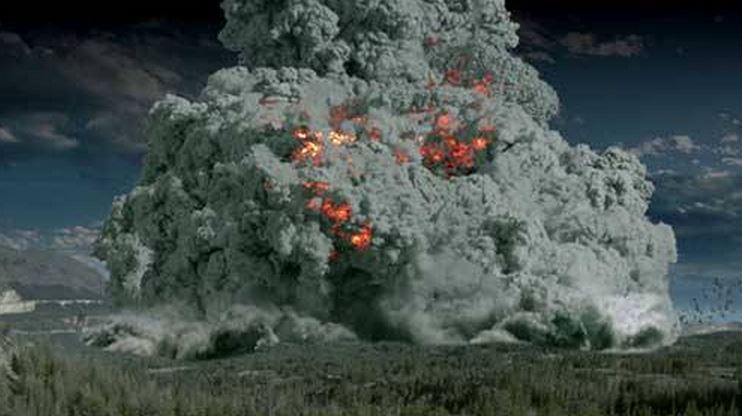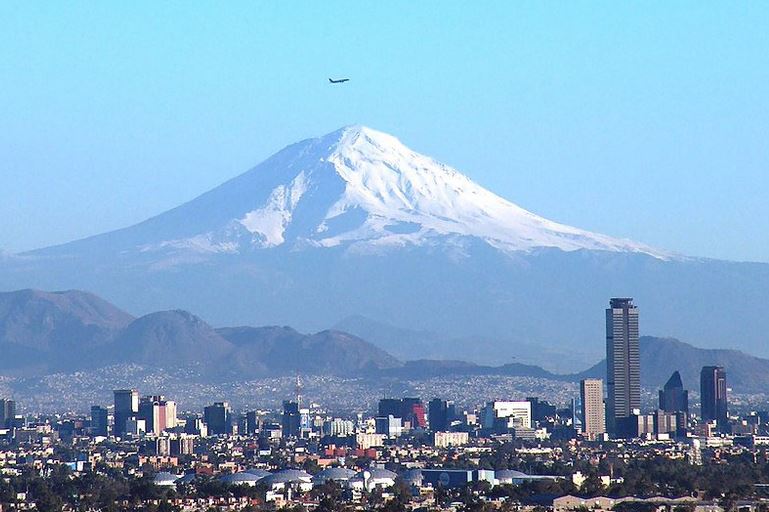Experts at the European Science Foundation warn there is a 5% to 10% risk of a major volcanic eruption by the end of this century that could kill millions of people and devastate much of our modern society.
The report – ‘Extreme Geohazards: Reducing the Disaster Risk and Increasing Resilience’ – was presented at the general assembly of the European Geosciences Union in Vienna, Austria, on Tuesday.
The European Science Foundation wrote:
“Exposure to geohazards has increased dramatically in recent decades and continues to do so. In particular, growing urban environments – including megacities – are in harm’s way. Because of the increasing complexity of modern society even moderate hazards can cause regional and global disasters.”

Extent of area impacted by volcanic ash during the Mount Tambora eruption in 1815. (Image: esf.org)
An eruption the size of the Tambora explosion on Sumbawa, Indonesia in 1815, which killed about 100,000 people, would be a much bigger killer of humans today because there are many more of us and there are mega-cities not far from active volcanoes.
Mexico City, with a population of more than 20 million, is just 90 kilometres (55 miles) from the Popocatepetl, a major active volcano.
Modern society would also be severely affected by the alteration to the climate caused by a major volcanic eruption, as well as high levels of poisons in the atmosphere.
The Sumbawa eruption’s ash cloud reached more than 43 km (26 miles) into the atmosphere and caused temperature changes that led to serious epidemics and famine.
With the current world population more than seven times what it was in 1815, the scale of human deaths today would be much greater. Add to this modern society’s reliance on global travel, and the impact of a mega-eruption starts to mount.
The authors urge experts and policymakers to take the threat seriously and start preparing for an international response for such a disaster. We also need to get together and monitor the planet more carefully for extreme geohazards, they added.
They estimate it would cost between $500 million and $3.5 billion (£340m and £2.3bn) annually to raise the level of monitoring for devastating volcanic eruptions. However, the benefits that an early warning system could give us would far outweigh the costs, they insist.

We are completely unprepared for a super-volcanic eruption, the authors warn.
The authors wrote:
“Although in the last few decades earthquakes have been the main cause of fatalities and damage, the main global risk is large volcanic eruptions that are less frequent but far more impactful than the largest earthquakes.”
“Due to their far-reaching effects on climate, food security, transportation, and supply chains, these events have the potential to trigger global disaster and catastrophe. The cost of response and the ability to respond to these events is beyond the financial and political capabilities of any individual country.”
“An international geopolitical response will be required, where science has a unique and key role in preparation, response and mitigation.”

Mexico City’s more than 20 million people are just 55 miles from the Popocatepetl, an active volcano.
The report looked at a range of geohazards Earth faces, including floods, tsunamis, hurricanes, asteroid impacts, drought, earthquakes, avalanches, wildfires and volcanic eruptions.
Because the incidence of tsunamis and earthquakes has increased, resources have focused on monitoring and preparing for these two threats. However, the potential devastation posed by volcanic eruptions is far greater, and should be taken more seriously, the authors warn.
Citation: “Extreme Geohazards: Reducing the Disaster Risk and Increasing Resilience. A Community Science Position Paper,” Hans-Peter Plag, Sean Brocklebank, Deborah Brosnan, Paola Campus, Sierd Cloetingh, Shelley Jules-Plag and Seth Stein. European Science Foundation. Published 15 April, 2015.
